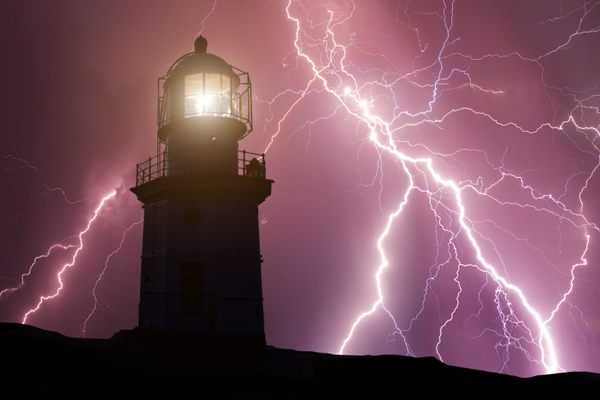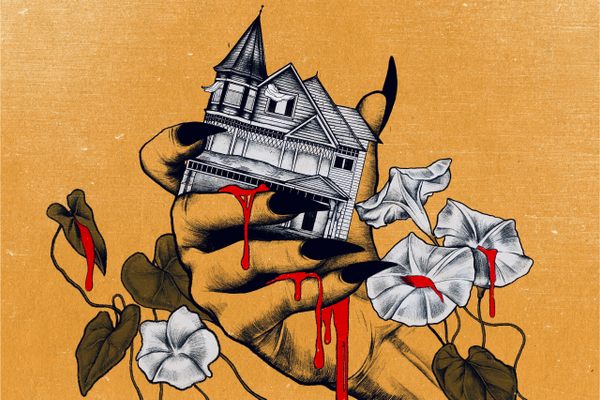Haunted Houses: Tokyo’s Real Estate Listings with Problems
A well & water bogie spirit (illustration from “Books and Bookmen,” 1899, via Internet Archive Book Images)
The Japanese are renowned for the supernatural — the yokāi (roughly “monsters”), and yūrei (“ghosts”). The ghosts and monsters of Japanese tradition still infiltrate and live in the Japanese conciousness, with school children telling stories about yokāi first mentioned a thousand years ago, alongside some that were only invented during the 20th century. Remakes of Japanese films such as The Ring and The Grudge have also helped to introduce these stories to larger audiences around the world.
Rumors of haunted temples, office buildings, and homes are widespread around Japan. Imagine a Google Maps page where the archipelago that makes up Japan is obscured by red pins of hauntings, from Okinawa to Hokkaido. Yokai, like the Nopperabō (the “man with no face”) and the Kuchisake Onna (“slit-mouthed woman”) are still seen on city streets, and terrified bystanders have been known to report their presence to the police. Places like the Aokigahara Suicide Forest and Sunshine 60, a mixed-use skyscraper in Ikebukero, Tokyo, are well-known as haunted sites in Japan, and each summer Obake Yashiki (“haunted houses”), such as Tokyo’s the Cursed Tooth, pop up to give people a chill in the hot weather.
A Storm-Fiend (illustration from “Books and Bookmen,” 1899, via Internet Archive Book Images)
The props and scares of the Obake Yashiki industry might be worth a scream and a moment of terror with your friends, but traditional Japanese ghosts are not to be laughed at, as a spirit will only return to spook the living if it died due to serious betrayal or other powerful, unresolved emotions. So-called kodokushi, or “lonely deaths,” are also implicated, as are suicides and murders, and to live in a house where such a death has occurred is to tempt fate.
A “lonely death” is one where the body is not found for a long period after death, and the stains left behind on the floor are, in the Japanese mind, the path for the ghosts to re-enter the world. Although the traditional Japanese view of family is one of three generations living together, this life is far removed from the modern reality. In 2008, Tokyo saw more than 2,200 people over the age of 65 die a lonely death.
A Japanese ghost (illustration from “Books and Bookmen,” 1899, via Internet Archive Book Images)
In Japan, the memories of yokai and yurei impact peoples’ daily lives, as jizo (stone statues that placate the dead) are decorated with red scarves and are left offerings of mochi (cakes made of bean-curd) and tanuki statues stand outside bars and restaurants to trick the prankster yokai into thinking they’ve already feasted here (and paid with leaves, no doubt). Even in the West, you would have seen statues of neko-chan waving their paws, or golden toads with a coin in their mouths at almost any Asian fast foodery, to bring in money. Reports of “ghost lights” illuminating the seas off Fukushima in the wake of the twin natural and manmade disaster were made, and indeed were reported in the same area after a tsunami in the 1770s. Reports of these “ghost lights” out at sea span the length of Japanese history, almost always following in the wake of tsunami and earthquakes. The official explanation is that “ghost lights” are the result of escaping gas, but Japanese traditions seem to indicate otherwise.
Japan’s estimated population at the time of their last census was 127 million, and people have been living on this small collection of islands since the Jomon period (~12,000 BCE.) In an increasingly crowded country with a strong traditional belief in ghosts and hauntings, the question of avoiding a marauding ghost becomes impossible to solve, without outside help. The wake-ari bukken, or “stigmatized properties,” have not only spawned a collection of websites to either help you avoid or assist you in renting a place that may be “psychologically harmful,” but also have been written into Japanese law, a law which refers to a list of seven different criteria, which are:
- A location near a known criminal organization;
- A location built by, or on ground once owned by, a cult;
- A location built on top of a well, whether filled in or still open (wells feature heavily in Japanese folklore);
- A location near a waste or sewerage treatment facility, or a crematorium;
- A location with a history of fires or flooding that caused death or injury;
- A location where a suicide, murder or “lonely death” have occurred.
Spirit on the ceiling (illustration from “Books and Bookmen,” 1899, via Internet Archive Book Images)
Houses, hotel rooms, and entire buildings can be afflicted — and several services exist to help concerned Japanese either avoid these haunted houses, or to find cheaper rental properties, up to 20% cheaper. They can also be used by the more macabre-minded to find allegedly haunted hotel rooms. Websites such as SUUMO are honest about any problems that may have existed. They even take it further than that with a cutesy jingle: “It’s a stigmatized property, which means a low initial cost! You’ll be living by yourself, but it won’t feel like it! It’s perfect for lonely singles!”, and they have a cute picture of a ghost in the images as a mascot, a mascot designed by the creators of the popular Japanese character, Doraemon. OutletFudousan only deals with stigmatized properties, and even offers a free exorcism with any rental. CAVEAT EMPTOR is another site that deals just with “real-estate listings with problems,” although they’re expanding their database to cities outside of Japan itself, and now show similar listings for the US and Canada via their Android app.
Would you live in an allegedly haunted house?
I know I would — especially with the rental prices in Tokyo.
The Simulcram Vulgare (illustration from “Books and Bookmen,” 1899, via Internet Archive Book Images)

















Follow us on Twitter to get the latest on the world's hidden wonders.
Like us on Facebook to get the latest on the world's hidden wonders.
Follow us on Twitter Like us on Facebook